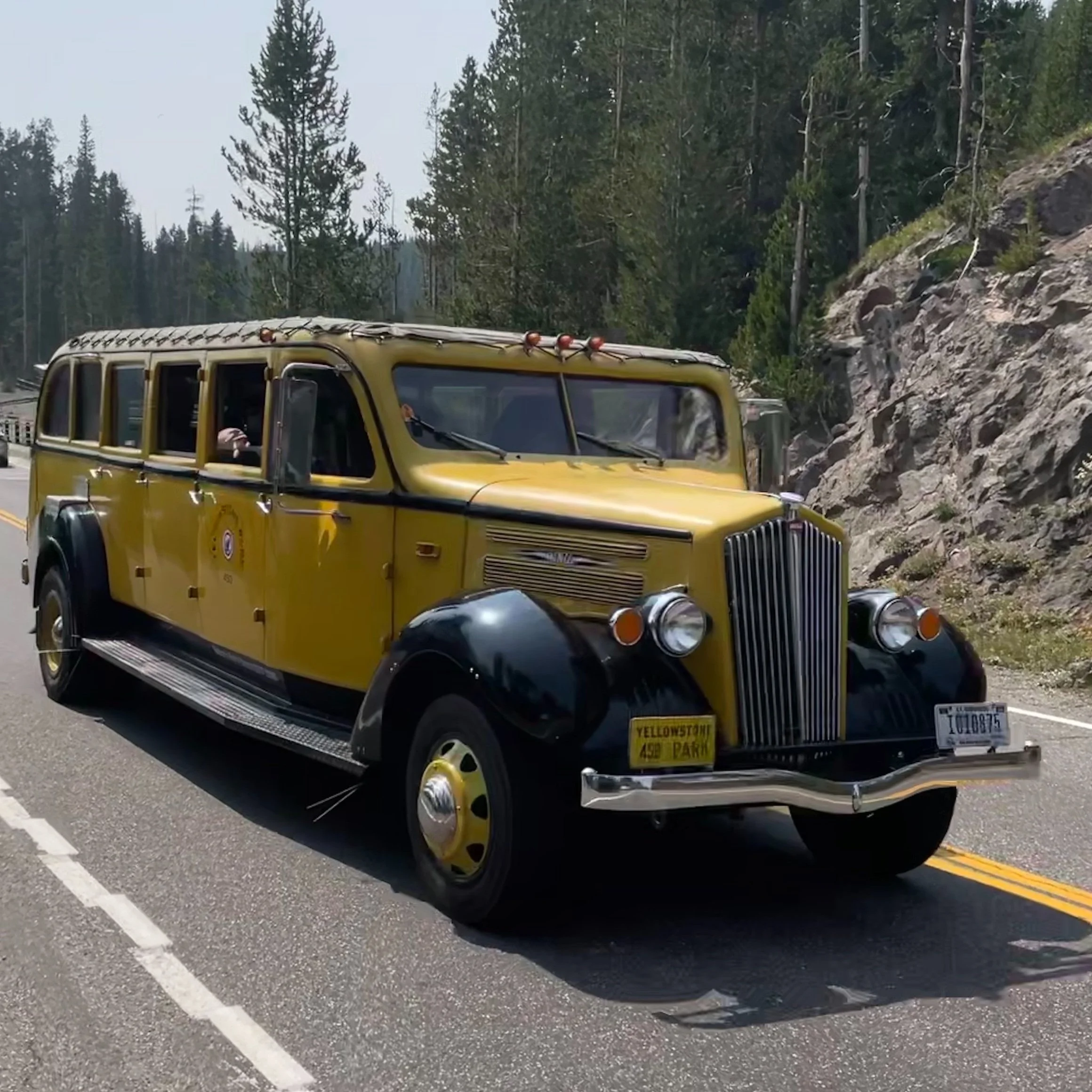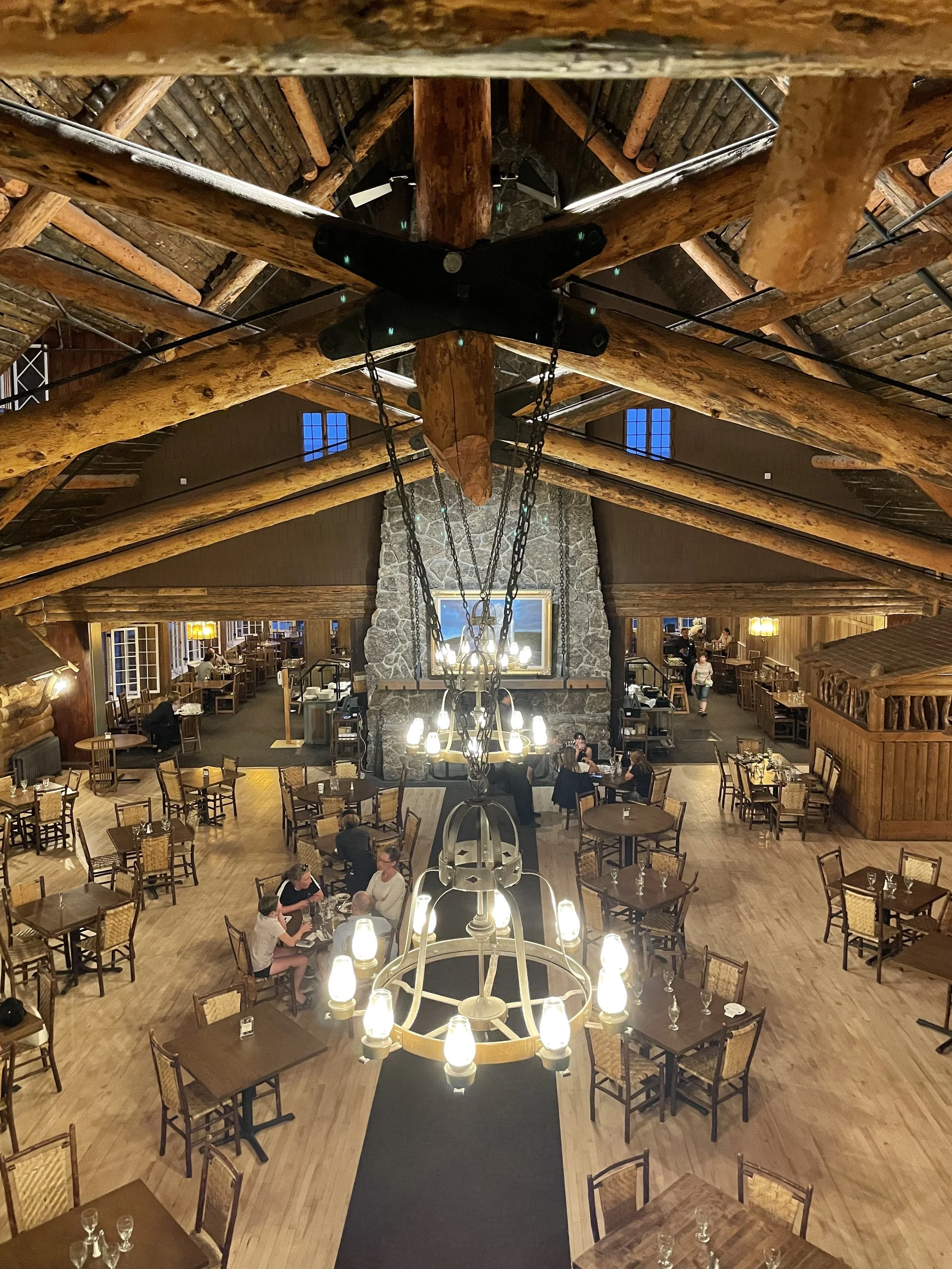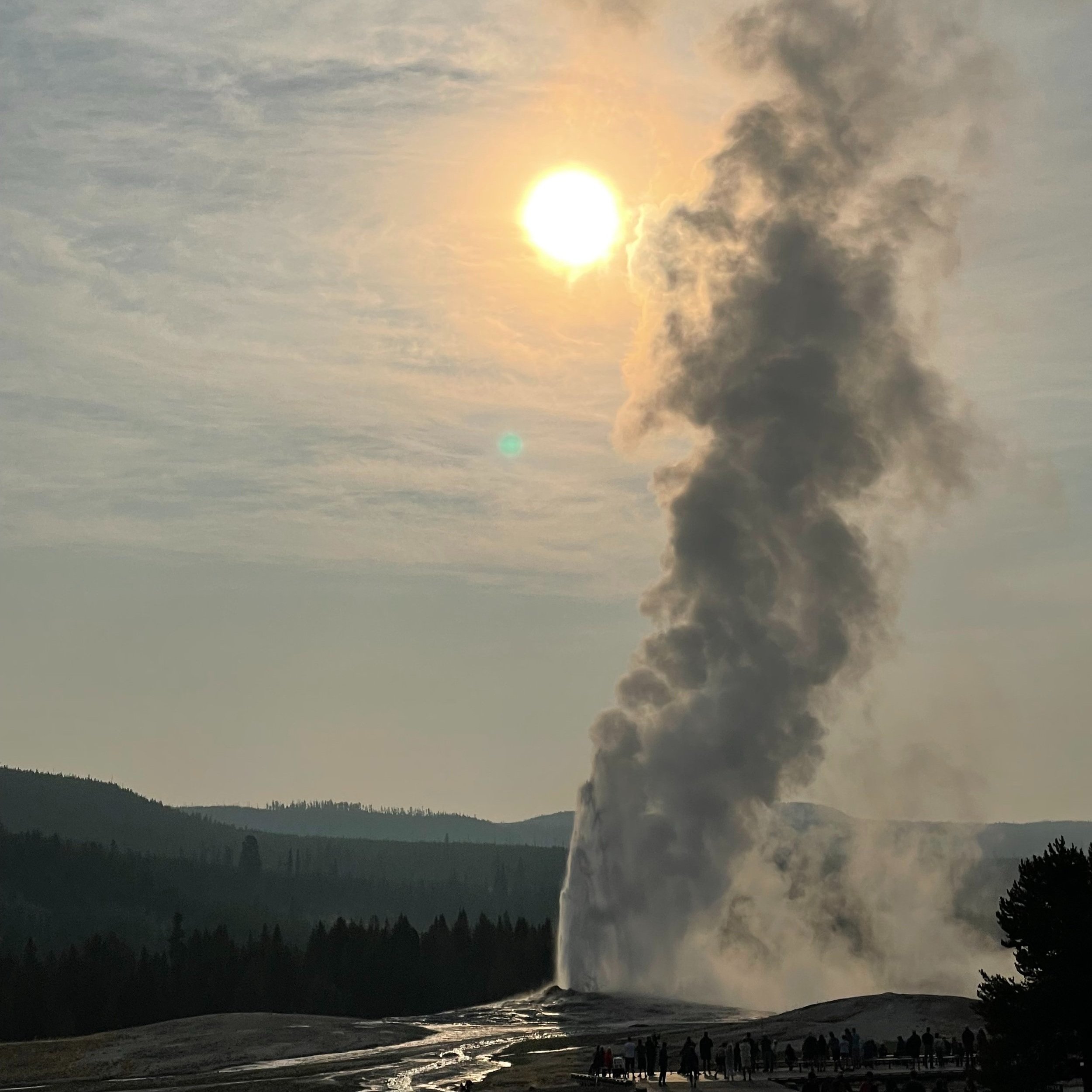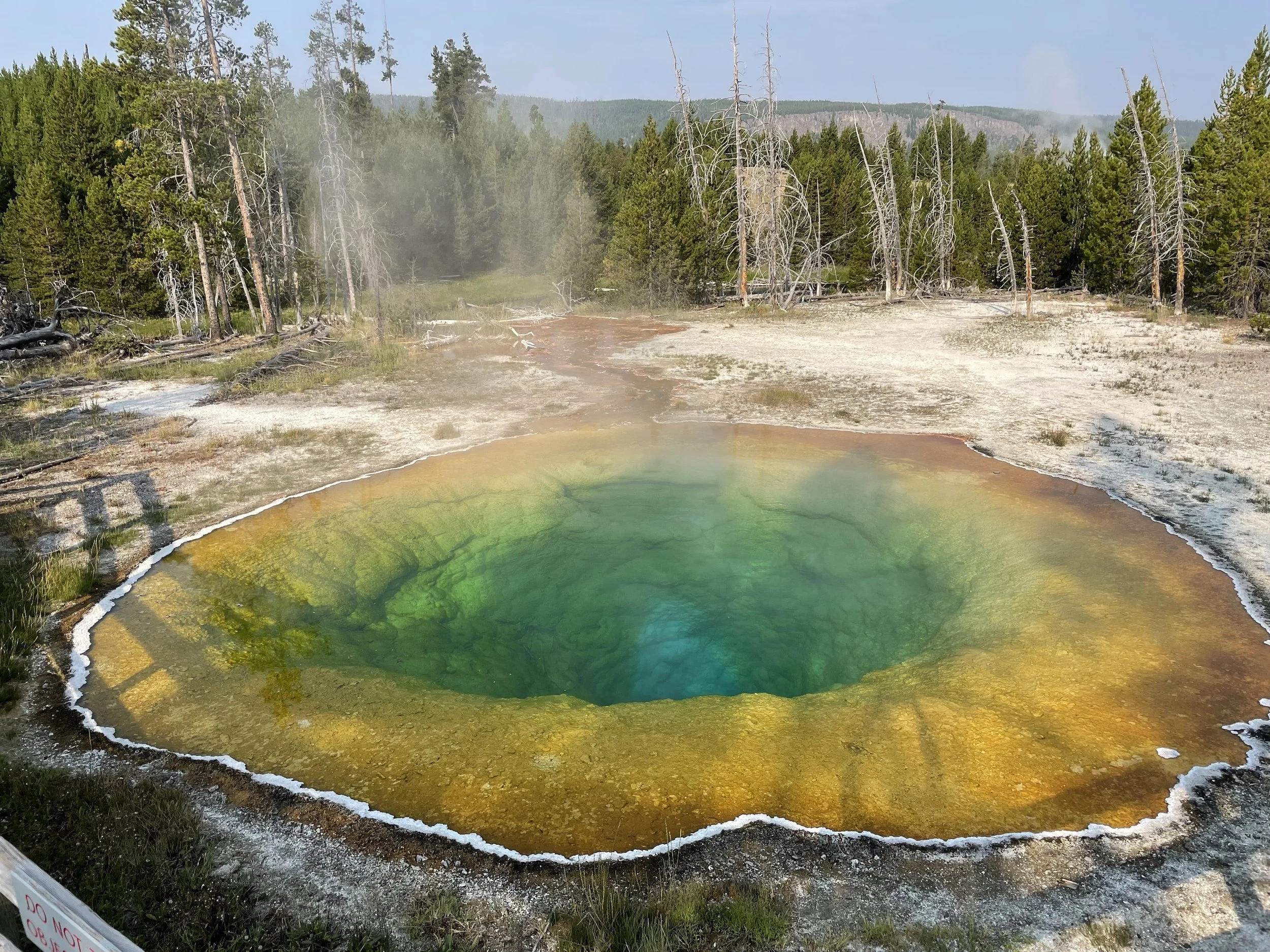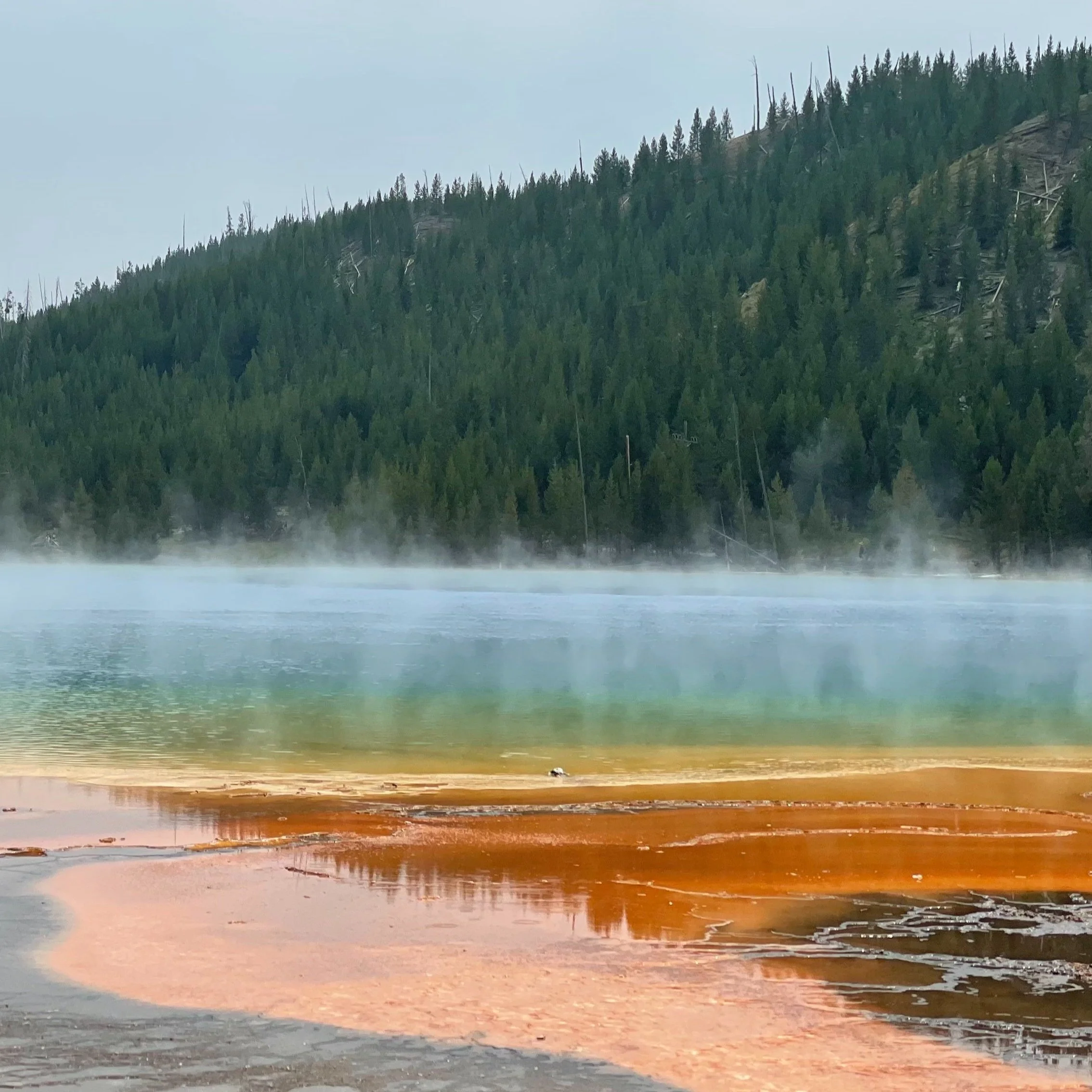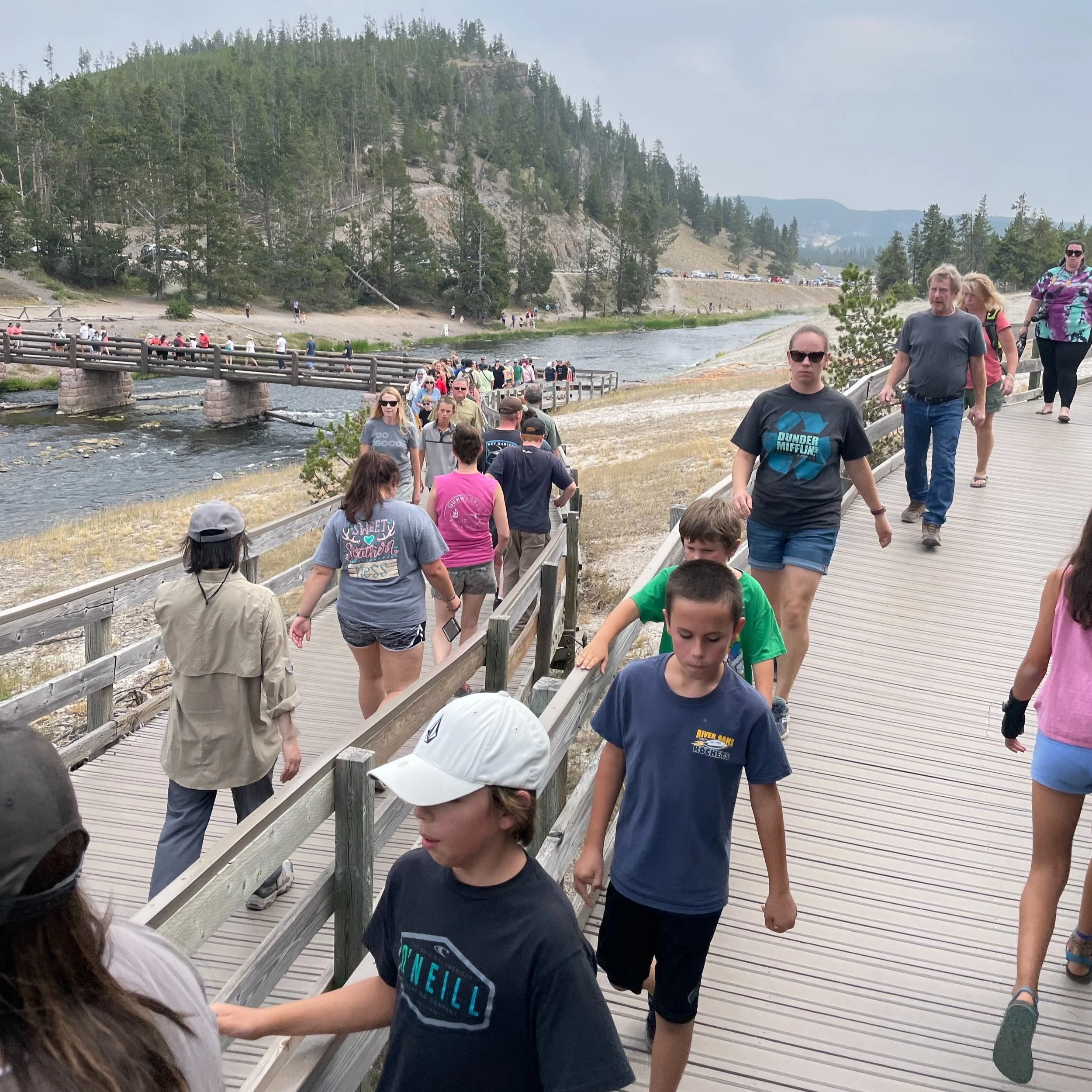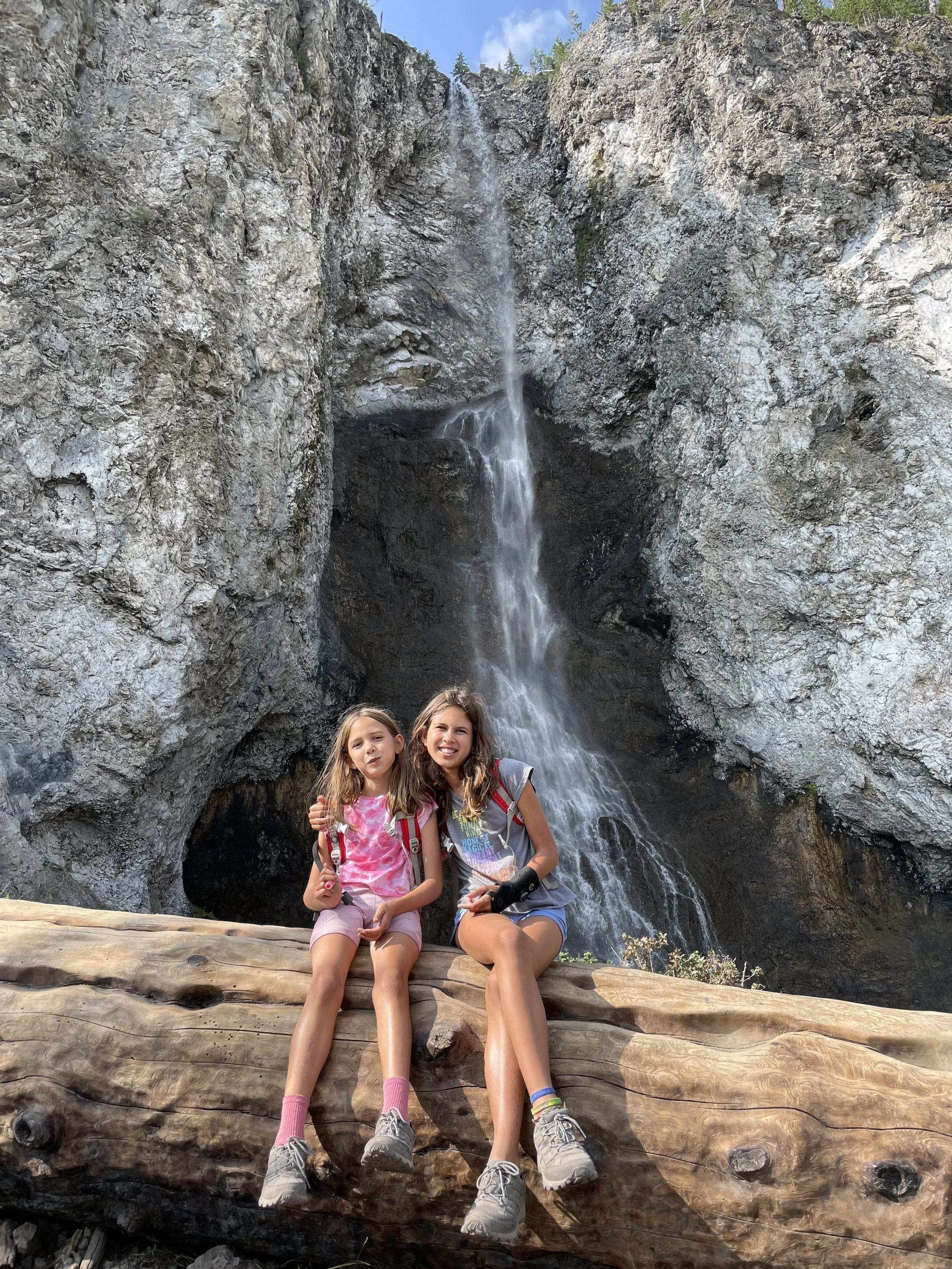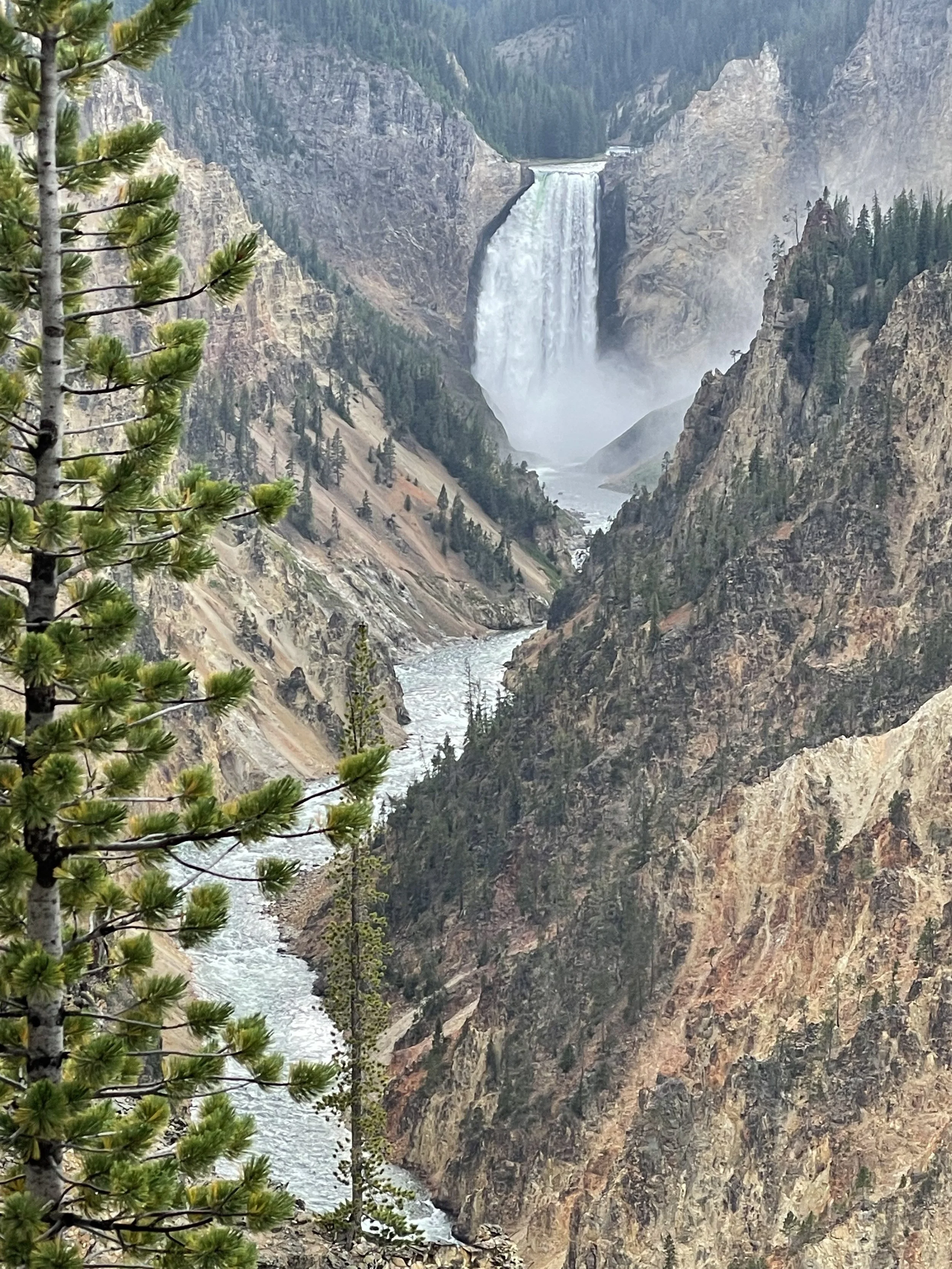Yellowstone National Park
How can Yellowstone live up to expectations, if the expectations are so incredibly high? The wildlife, the geothermal activity, the history, the canyons, the waterfalls, the expanse of wilderness. It sounds like five or six parks in one. And, to summarize, that’s pretty much what we found at Yellowstone. That, and a park that exceeded our expectations.
We entered Yellowstone from the South Entrance, having just finished a morning horseback ride at Grand Teton. Between the two parks we drove along the John D. Rockefeller, Jr. Memorial Parkway, a small NPS unit that connects to big national parks. Not much to see on the parkway, but it’s an important reminder of the role Rockefeller played in the preservation of many publics lands and national parks from Maine to California — especially his role in the creation of Grand Teton.
Something clicked when we entered into Yellowstone. All the words we’d read and heard, all the photos and videos we’d seen, all the images we’d conjured in our own heads; we were now here in the world’s first national park.
This land is so special that, in 1872, Americans had the foresight to set it aside and protect it for the enjoyment of future generations. Today, we take for granted that national parks exist all around us, and across the globe, but just 150 years ago, that was not true. Yellowstone National Park is so much to so many people all at once, but, first, it was just a great idea.
Our first stop was a quick pull over at Lewis Falls, where we were promptly greeted by a passing Yellow Bus — the iconic park transportation at Yellowstone. We had truly arrived. Next stop was Grant Village Visitor Center for Junior Park Ranger materials — a must.
An Iconic Yellow Bus at Yellowstone
(A note to parents: For some reason, Yellowstone does Junior Rangers differently. Instead of the wooden or plastic badges, Yellowstone offers patches. However, to get the books and patches, a $3 donation is required. And if you only have a $20 bill, you might end up paying more, since there is no change.)
Onto Thumb Geyser Basin where we got our first does of geothermal activity. Boiling mud and bubbling water prepared us for our next stop, the iconic Old Faithful.
Preparing for Yellowstone — and all of the parks in the summer of 2021 — we were assuming the worst when it came to crowds. As a result, we built our itinerary in a way that allowed us to continue moving in one direction through the park, avoiding backtracking and extra driving as much as possible. This is easy when you’re in a camper van and carry your sleeping quarters inside the vehicle.
However, there isn’t a campground adjacent to Old Faithful. There are however, multiple lodging choices right next to the geyser. We splurged for one night on the Old Faithful Inn — the 117 year-old rustic, iconic hotel located steps from the bleachers at Old Faithful.
The Old Faithful Inn
Staying overnight at the Inn allowed us to see multiple eruptions of Old Faithful and to appreciate the variety the great geyser can offer. Not only does the size and shape of the eruption change slightly, but the experience can vary based on the duration of the eruption, the natural lighting, and the crowd. After seeing a typical afternoon eruption with packed bleachers, we greatly appreciated the first eruption after sunset, when the light was diffuse and the crowd was dispersed.
The real treat is the first eruption after sunrise, which we chose to enjoy — clad in down sweaters — from the second story deck of the Old Faithful Inn. Facing East, the sun was just peaking above the trees when the shooting water made it’s faithful appearance, adding mist and majesty to an already beautiful morning.
Sunrise at Old Faithful
It was also wonderful to get on the trail around the Upper Geyser Basin (3.1 miles by our route) before the throngs of people descended. We finished in time for one last spout from Old Faithful, this time viewed from the north.
Morning Glory Pool
But the real treat of staying at the Inn was the structure itself. The towering fireplace in the lobby with multiple layers of balconies and catwalks all supported by enormous lodgepole pine trunks and branches. The Inn is truly an architectural masterpiece, and a sight to see as much as the geyser.
Moving north, we stopped at Biscuit Basin and then onto Grand Prismatic Springs by lunchtime. The parking lot was full, causing southbound traffic to come to a standstill. Luckily we were able to snag a spot on the side of the road about a quarter mile past the parking lot. There we popped the top, opened the table, and prepared our lunch.
Grand Prismatic Spring
By the time we walked down to Grand Prismatic, park police had shut down the parking lot, and traffic was literally backed up in both directions as far as the eye could see (which is more than a mile to the south). The boardwalk was crowded, but didn’t take away from the iconic chromatic hot spring. Plus, we knew we’d be back the next day to view it from above.
Crowds at Midway Geyser Basin, July 2021
We ended up at Lower Geyser Basin next, where we spent more time that we expected waiting on Great Fountain Geyser, which erupts only one every 11 days. The show was well worth it — perhaps more satisfying than Old Faithful, if not as iconic.
We stayed overnight at Madison Campground, where upon attempting to leave in the morning, we were blocked in near the gate by a bison, who was apparently trying to inquire about open campsites. It was so peaceful to be up early with the wildlife.
Our early rise was so that we could start Fairy Falls trail while it was still cool (and while we could still find parking). On the way to the falls we hiked through the Grand Prismatic Overlook, where we got a much better view of the colorful hot spring, both because we were elevated and because the boardwalks weren’t packed yet.
The Fairy Falls trail offers an eerie, yet educational, walk through the woods. In 1988, this part of the park was devastated by wildfire. Thousands of 80+ foot-long tree trunks still litter the ground, as new pines grow up between them. Most of the new growth is only 30 feet tall, making the forrest seem full, but not dense. There is however enough foliage to support the local wildlife, as we realized when we found a large pile of bear scat next to a grizzly bear paw print.
Fairy Falls
After Fairy Falls, we hit Artist Paintpots and the Norris Geyser Basin. At Norris we quite enjoyed Vixen Geyser, a small bubbling pot right next to the trail that was — on that day — erupting every five minutes, then completely draining, only to fill and repeat. Sometimes the action away from the crowds is even more interesting.
That night was the first of two at Canyon Campground, a relatively central location. Our morning was spent in the Hayden Valley. Again, another advantage to the camper van is the ability to wake up, drop the top, and hit the road. We stopped to photograph a bull elk in a meadow, came across a bison jam, and snagged a parking spot in a small pull off overlooking the Yellowstone River, all before breakfast. Our goal that morning (and every day) was to see wolves. But this morning, we had to be satisfied with close bison encounters and a gorgeous sunrise.
The Yellowstone River at Dawn
In the late morning, we drove down to Yellowstone Lake, got a snack at Lake Lodge, and rented a motor boat at Bay Bridge. The girls loved zipping around the lake, even if we only hit a small corner of it in our hour and a half rental, before impending thunderstorms drove us in. (Yellowstone Lake is huge!)
On Yellowstone Lake
We chose to drive East from Fishing Bridge until we found a secluded spot along the lake. A picnic lunch and skipping some rocks across the water was a perfect example of how enjoyable an unplanned venture can be.
We tried to spend some time at Mud Volcano on the way back, but we were both rained out and “bisoned out,” as a big bull decided he was going to close the path by simply being on it. Our last stop was the Grand Canyon of the Yellowstone in a slight drizzle. We wish we had found a bit more time to explore here, but we did make it to the Brink of Upper Falls, Artist Point, and Grand View before retiring to Canyon.
Grand Canyon of the Yellowstone
For the summer of 2021, the road from Canyon to Roosevelt was closed. So we missed out on Tower Fall, Mt. Washburn, and a few other sites. However, it caused us to take the long way from Canyon to Mammoth — approaching from the south — and that was an amazingly gorgeous morning drive.
The Mammoth area feels like an entirely different park and landscape, especially the road up to Gardiner, Montana, where we had lunch and visited the famous Roosevelt Arch. In the afternoon, we toured Mammoth Hot Springs on foot in a desperately hot sun. As the day drew to a close we walked around historic Fort Yellowstone mingling with dozens of elk who make their way into “town” (and careful to keep our distance from them).
The next day was a Saturday, and it was the dedicated wolf watching day. We were primed to hopefully, possibly spot a wolf in the wild. We’d done our research and knew that Slough Creek was the most likely spot, and we were there before the sun rose. Through the generosity of the every-day wolf watchers we were able to see two adults (“907” and a yearling) and eight pups, all viewed from a spot called Bob’s Knob — which we were actually familiar with from the (highly recommended) book American Wolf by Nate Blakeslee.
Bob’s Knob in Lamar Valley
This made our day. We spent more than three hours with the wolves until they started to disappear, and it was still just 9am. So, we continued into Hayden Valley. At Specimen Ridge, we saw more bison that we could have imagine existed in the park —just bison, bison, everywhere. We were also treated to one more lone wolf — this time spotted on our own. He trotted across the valley as we followed him with our binoculars for almost ten minutes. A genuine treat.
A Yellowstone Wolf through a Scope
Lunch in Cooke City, a close encounter with a badger, a handful of bison jams, and a stop at Petrified Tree, led us to the evening’s special activity a horseback ride and the Roosevelt Cookout. The girls can, honestly, not get enough horse riding time, and the cookout, though a bit campy was a wonderful way to wrap up our time at Yellowstone. (We definitely recommend the cookout for families!)
Before we spent a second (indulgent) night in the Mammoth Hot Spring Hotel, we noticed something on our drive back from Roosevelt. A few cars had stopped near a bridge. We stopped too and were treated to our first bear sighting! A lone black bear was climbing down a ravine toward the river, stopping to grab some berries from bushes along the way.
Wolves, bears, and horseback riding in the same day? Yellowstone is truly the place of wildlife dreams!
Six days in Yellowstone was certainly not enough, but it was a good amount of time. And we are certain, we’ll be back, because the next time we come, it will all be different again.

